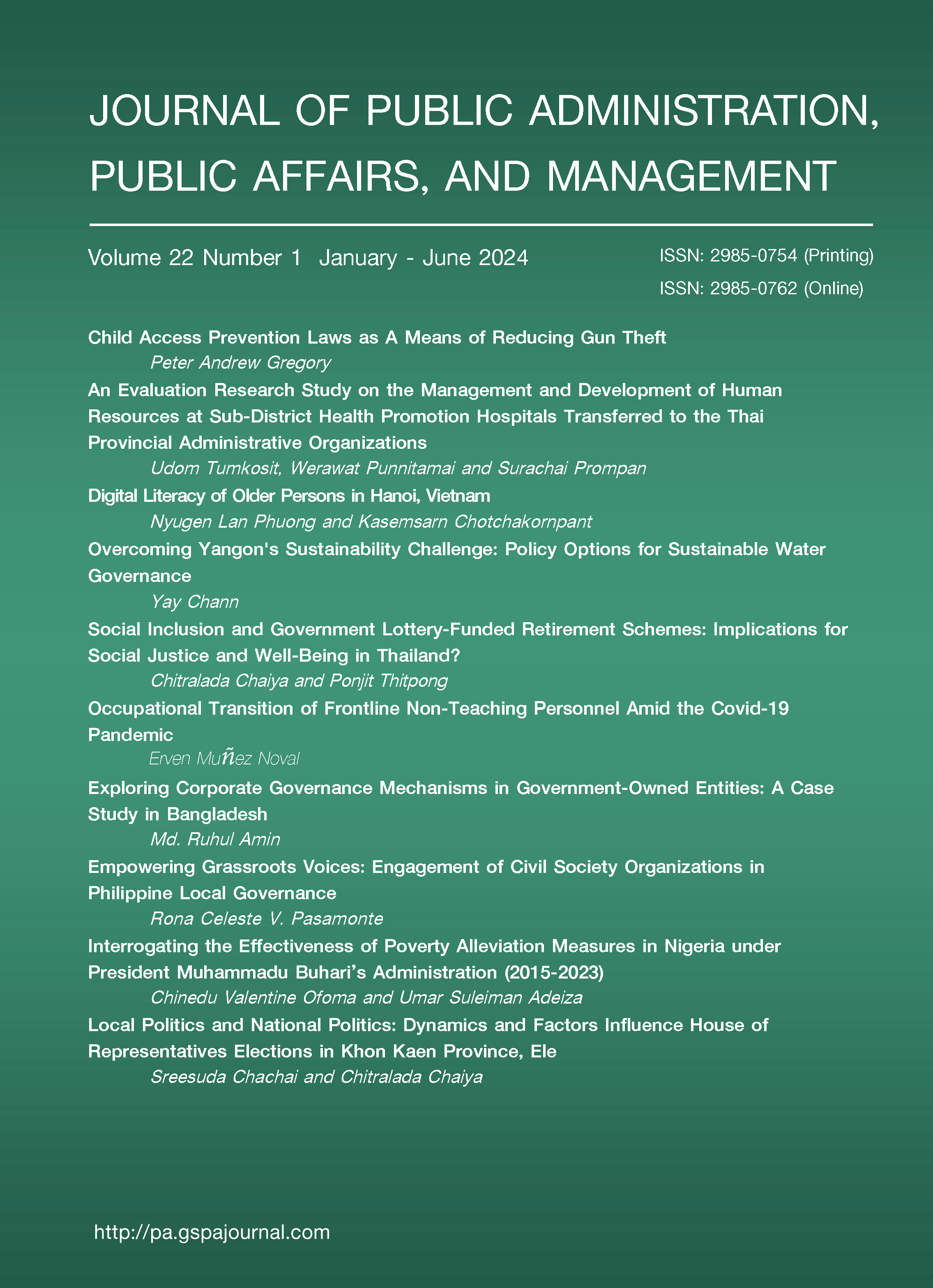Exploring Corporate Governance Mechanisms in Government-Owned Entities: A Case Study in Bangladesh
Keywords:
Governance, corporate governance, government-owned entities, transparency, accountability, BangladeshAbstract
This research study examines the complex corporate governance systems of government-owned entity/entities in Bangladesh. The complicated corporate governance of Bangladeshi government-owned companies. Understand government corporate governance requirements for openness, accountability, and sustainability since government enterprises are critical to the economy. This research explores Bangladeshi government-owned entities' efficacy and issues. This mixed-methods study collected qualitative and quantitative data. Semi-structured interviews with board members, CEOs, and governance oversight officials will gather qualitative data. Documentary analysis of corporate governance rules, regulations, and reports will contextualize selected government enterprises' governance systems. Surveys will measure stakeholders' governance and organizational performance opinions. This study should advance corporate governance in government-owned firms, notably in Bangladesh. The paper recommends ways to improve government enterprise governance by identifying best practices, problems, and progress prospects. This study explores government-owned enterprise (GOE) governance approaches, including board structures, regulatory frameworks, and internal control mechanisms, utilizing a comprehensive literature analysis and empirical data. The research also examines political influence, stakeholder dynamics, and organizational culture as significant factors determining GOE governance. effectiveness. These findings can assist policymakers, regulators, and GOE executives enhance governance, openness, accountability, and efficiency. Explaining GOE performance methods makes this article useful for public sector corporate governance talks. Our results may help policymakers, regulators, and business leaders in Bangladesh and overseas make informed decisions and improve governance in government-owned entities. Openness, accountability, and sustainable development in government firms are promoted in this research to boost economic growth and social well-being.
References
Adams, R. B., & Ferreira, D. (2009). Women in the boardroom and their impact on governance and performance. Journal of Financial Economics, 94(2), 291-309. https://doi.org/10.1016/j.jfineco.2008.10.007
Aguilera, R. V., & Cuervo-Cazurra, A. (2004). Codes of good governance worldwide: What is the trigger? Organization Studies, 25(3), 415-443. https://doi.org/10.1177/0170840604040669
Creswell, J. W., & Creswell, J. D. (2021). Research Design: Qualitative, Quantitative, and Mixed Methods Approaches. 5th ed. California: SAGE Publications.
Freeman, R. E., & Reed, D. L. (1983). Stockholders and stakeholders: A new perspective on corporate governance. California Management Review, 25(3), 88-106. https://doi.org/10.2307/41165018
Haque, F., & Yadav, A. (2022). The role of corporate governance in mitigating agency problems in state-owned enterprises: Evidence from Bangladesh. Journal of Business Ethics, 179(2), 419-437. https://10.1007/s10551-022-04832-1.
Hossain, M., & Bhuiyan, M. B. (2022). Interview techniques in corporate governance research: Insights from Bangladesh. Managerial Auditing Journal, 37(5), 788-804. https://10.1108/MAJ-09-2021-3202.
Hossain, M., & Hammami, H. (2009). Voluntary disclosure in the annual reports of an emerging country: The case of Qatar. Advances in Accounting, 25(2), 255-265. https://doi.org/10.1016/j.adiac.2009.08.002
Jensen, M. C., & Murphy, K. J. (1990). Performance pay and top-management incentives. Journal of Political Economy, 98(2), 225-264.
Khan, A., Muttakin, M. B., & Siddiqui, J. (2013). Corporate governance and corporate social responsibility disclosures: Evidence from an emerging economy. Journal of Business Ethics, 114(2), 207-223. https://doi.org/10.1007/s10551-012-1336-0
Klein, A. (2002). Audit committee, board of director characteristics, and earnings management. Journal of Accounting and Economics, 33(3), 375-400. https://doi.org/10.1016/S0165-4101(02)00059-9
Kothari, C. R., & Garg, G. (2020). Research Methodology: Methods and Techniques. 4th ed. New Delhi: New Age International Publishers.
La Porta, R., Lopez-de-Silanes, F., Shleifer, A., & Vishny, R. (2000). Investor protection and corporate governance. Journal of Financial Economics, 58(1-2), 3-27. https://doi.org/10.1016/S0304-405X(00)00065-9
Miceli, M. P., & Near, J. P. (2002). What makes whistle-blowers effective? Three field studies. Human Relations, 55(4), 455-479. https://doi.org/10.1177/0018726702055004463
Organization for Economic Co-operation and Development. (2015). G20/OECD Principles of Corporate Governance. Retrieved from https://www.oecd.org/daf/ca/corporategovernanceprinciples/31557724.pdf.
Shleifer, A., & Vishny, R. W. (1997). A survey of corporate governance. Journal of Finance, 52(2), 737-783. https://doi.org/10.2307/2329497
Tricker, R. (2012). Corporate Governance: Principles, Policies, and Practices. Oxford: Oxford University Press.
Uddin, S., & Choudhury, J. A. (2008). Rationality, traditionalism and the state of corporate governance mechanisms: Illustrations from a less-developed country. Accounting, Auditing & Accountability Journal, 21(7), 1026-1051. https://doi.org/10.1108/09513570810907465
Downloads
Published
Issue
Section
License

This work is licensed under a Creative Commons Attribution-NonCommercial-NoDerivatives 4.0 International License.



